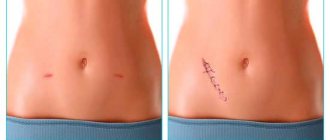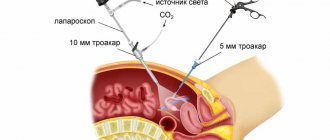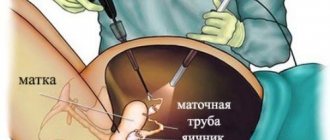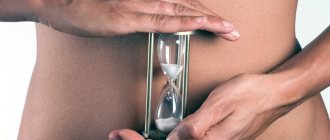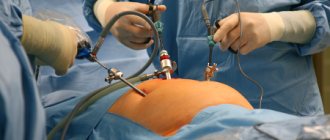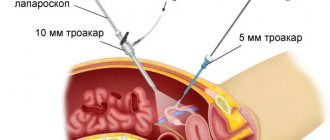Wearing tights, stockings and knee socks is indicated not only for the prevention and treatment of varicose veins. During laparoscopy performed in foreign clinics, the patient will be required to wear special stockings. They may be called differently - compression, hospital, anti- or anti-embolic, but the essence and purpose of these modern knitwear is the same.
Anti-embolic compression stockings
Today, an increasing number of domestic specialists are adopting this experience and are also beginning to be attentive to patients. Let's try to figure out why and why it is necessary to use compression hosiery, as well as who, when and for how long it is necessary to wear it in case of laparoscopic intervention in the body.
What is compression hosiery
Compression stockings are often used to maintain proper pressure in the lower extremities. This special type of underwear is used in medicine for the prevention and treatment of diseases associated with vasodilation, thrombosis (a disease accompanied by the formation of dense blood clots that interfere with the free circulation of blood), and varicose veins. Socks, stockings, bandages, tights with a compression effect prevent blood stagnation, the formation of blood clots, and the occurrence of edema due to harmonious pressure on different parts of the legs. Compression garments are divided into:
- Anti-varicose. Therapeutic knitwear, which is used to treat varicose veins. Helps get rid of signs of the disease even in the later stages, eliminates such an unpleasant manifestation of the disease as varicose veins. It is necessary to use anti-varicose jersey only on the recommendation of a phlebologist.
- Preventive (consumer). To prevent the first signs of illness, such underwear is often used. It can be worn without consulting a doctor if you have heavy loads on your legs or have a sedentary lifestyle.
- Antiembolic (or hospital). Prescribed by a doctor when the patient is in intensive care, during childbirth and during surgery. To prevent air embolism (blocking the lumen of a blood vessel), the products are worn by patients during periods of prolonged immobility (stroke, severe fracture, heart attack). Knitwear must be worn for several days after surgery to avoid the formation of blood clots, blood stagnation, and hypotension (low blood pressure).
- Decongestant. This knitwear, like medicinal ones, is prescribed by a specialist, but only for patients with impaired lymphatic drainage.
Today there is a huge range of medical compression stockings. To make the right choice, you need to contact a phlebologist who can assess the condition of the veins and give recommendations for the prevention and treatment of diseases using compression hosiery. Such underwear is also indicated for people who have one or more risk factors:
- taking hormonal medications;
- hereditary predisposition to varicose veins;
- standing or sedentary work (hairdressers, salespeople, surgeons, cooks, etc.);
- high blood clotting or viscosity;
- evening fatigue, swelling of the legs;
- chronic constipation;
- long trips;
- multiple pregnancies;
- walking in high heels;
- sedentary lifestyle;
- overweight;
- smoking;
- alcohol consumption.
Compression classes
The key parameter of these knitted products is the compression class. The purpose of the stockings directly depends on it. The following compression classes are distinguished:
- Compression class 1 - prescribed during childbirth and the postpartum period (3-6 days), as well as for operations lasting up to 45 minutes if the patient is predisposed to thrombosis. Also, stockings of this class are used during long-term surgical procedures, during the period of resuscitation, when the patient is immobile for a long time after injuries or for certain diseases. View products.
- Compression class 2 - prescribed in the presence of all the indications characteristic of the first group, as well as in the presence of varicose veins and nodes. View products.
- Compression class 3 - prescribed if the patient has chronic venous insufficiency, severe swelling of the legs, thrombophlebitis of the lower extremities, venous lymphatic insufficiency, and is also used for compression therapy of the legs after surgery. View products
The choice of compression stocking class for surgery should only be made by a doctor.
What are anti-embolic stockings used for?
The main task of anti-embolic knitwear is to protect blood vessels and veins from the formation of blood clots in them. Compression products are used to optimally distribute pressure on the vessels. In addition, such underwear accelerates blood flow, reduces venous pressure, so fatigue in the legs quickly disappears, and the risk of thrombosis is reduced.
Anti-embolic (anti-thrombosis) elastic stockings must be used for operations involving interference with the functioning of internal organs, the musculoskeletal system, during caesarean section and childbirth. The distribution of pressure when wearing compression garments occurs as follows: 100% falls on the ankles, 50% on the knee, 70% on the middle of the shin, 40% on the middle of the thigh.
Complications
It is known that any venous vessel can thrombose, since in the veins the blood flows more slowly and calmly, and there is no such high pressure as in the arteries. But the most dangerous consequence of thrombosis is not the blood clot that remains in place in the veins of the leg, but pulmonary embolism.
DETAILS: Causes of blood at the end of urination and pain in men
Let us remember that scarlet, arterial blood, which is enriched with oxygen, does not always flow in the arteries, and dark venous blood, saturated with carbon dioxide, does not always flow in the veins. This happens in the systemic circulation, but in the small (pulmonary) circulation, the opposite is true. From an anatomical point of view, veins are all vessels that carry blood to the heart, no matter what its composition. And arteries are all the vessels through which blood flows from the heart.
It is known that blood pumps not only arterial blood to organs and tissues, but also sends venous blood to the lungs for oxygenation. And blood flows into the lungs through the pulmonary artery, since it leaves the heart, from its right ventricle, but venous blood flows in it.
Under normal conditions, the blood in a person’s legs rises through both superficial and deep veins. Superficial veins are larger vessels and flow at a slower rate.
In the deep veins, blood flow is faster. If the valve apparatus of the deep veins is disturbed, then the blood clots do not linger in the veins, but rush into large venous collectors: first into the femoral veins, then into the inferior vena cava, after which the blood clot passes through the right atrium without any difficulty and enters the large pulmonary artery from the right ventricle.
Now it quickly rushes to the lungs, but the pulmonary artery begins to branch into smaller vessels, first corresponding to the lungs, then to the pulmonary lobes, then to segments, and in one of the sections the blood clot gets stuck. As a result, everything that lies further than the blockage site is switched off from gas exchange.
In the event that the blood clot is very small, the situation may not even be noticed. But if the blood clot is large, then it can completely block the pulmonary artery, and this condition will be completely equivalent to blockage of the airways. A person dies from suffocation, but not from “blocking” the airways, but from the fact that the blood is no longer saturated with oxygen.
How to choose the right one
A phlebologist can help a patient choose surgical tights. There are certain rules by following which you can choose the right medical compression garments for surgery:
- the pressure in the compression hosiery should be distributed in an increasing manner - from a maximum on the ankles to a minimum on the hips;
- you need to pay attention to the color of the linen - white shades help the doctor monitor the condition of the veins during surgery;
- before purchasing a product, you need to take individual measurements (measure the circumference of your calves, ankles, knees, the length of your legs from the heel to the groin area);
- it is necessary to pay attention to hypoallergenic materials;
- compression underwear cannot be cheap, this is due to the peculiarities of production;
- for safety, the selected tights must comply with the environmental, medical quality standard RAL-GZ 387;
- the compression class must be determined by a specialist;
- You should pay attention to the presence of additional parts (zippers, belts, rubber bands), as they affect the ease of use of the product.
Article on the topic: Emotional stress and overflowing emotions: causes, symptoms and treatment
Manufacturer
The country of origin of medical compression products speaks volumes. High-quality knitwear that has proven itself on the positive side is considered to be products from Switzerland and Germany. It is necessary to buy medical elastic tights in specialized stores or retail outlets that are official dealers of recognized manufacturers.
Any company that seeks to produce good compression hosiery must initially undergo strict certification in Germany and Switzerland. Therefore, if elastic compression stockings have such a certificate, this indicates the high quality of the product. Russian doctors often recommend products from Sigvaris and Medi for purchase. In addition, well-known manufacturers are:
- Venosan;
- Venoteks;
- Ergoforma;
- Ecoten;
- BSN-Jobst;
- Relaxsan;
- OFA Bamberg;
- Ecoten;
- Thuasne;
- Intertextile;
- Bauerfeind;
- Intex;
- LuommaIdealista;
- Ortho;
- Scudotex.
Compression class
Medical knitwear has its own classification, which depends on the disease, features of use, compression class, i.e. the degree of pressure (in mmHg) that elastic stockings exert on the legs. Based on this, all knitted compression products have their own properties and are divided into three types:
- Preventive (compression class 0). The pressure is 15–18 mmHg. Art. It is used without the prescription of a specialist to prevent the development of venous insufficiency. If spider veins and veins are pronounced, zero compression class knitwear will not solve the problem.
- Medicinal, which is divided into:
- First class (18–21 mm Hg). Knitwear should be worn at the initial stage of varicose veins - to prevent its further development and improve blood circulation. Indications for use are: leg cramps, clear pattern of saphenous veins, spider veins, hormonal changes, swelling.
- Second class (23–32 mm Hg). Tights and stockings of this type are used for the prevention and treatment of chronic moderate venous insufficiency. They are indicated for use after operations, at stages 2 and 3 of varicose veins, for persistent swelling of the legs, acute thrombophlebitis (thrombosis with inflammation of the vein wall and the formation of a blood clot).
- Third class (34–46 mm Hg). Used in the treatment of severe forms of venous diseases. Indications for the use of such knitwear are severe persistent edema, lymphovenous and vascular congenital insufficiency, thrombosis, varicose veins, recovery after surgery.
- Fourth class (more than 49 mm Hg). It is used extremely rarely and is indicated for the most severe forms of varicose veins, when the valves and walls of blood vessels cannot cope with the task of transferring blood from the legs to the heart.
- Anti-embolic hospital knitwear (15–18 mm Hg) helps to activate blood circulation in the legs, increasing blood flow in the deep veins, and reduces the risk of thrombosis. It can only be used as prescribed by a doctor. Indications for use: operations, childbirth, caesarean section, epidural anesthesia, long-term bed rest.
Dimensions
Elastic medical underwear is always selected individually after consultation with a specialist. The correct choice of compression degree and product size will ensure high efficiency from its use and comfortable wearing. To choose the right tights or stockings, you need to take a series of measurements using a measuring tape. Four main parameters need to be determined:
- Calf circumference (the volume of the lower leg under the knee joint).
- Leg length. It is determined from the foot to the thigh circumference, not reaching 5 centimeters to the gluteal muscle.
- Ankle circumference. What is important is the exact volume of the shin above the ankle, i.e. the narrowest part of the leg.
- Thigh circumference. It is necessary to determine the hip circumference at a distance of 25 cm above the knee joint or 5 cm below the gluteal muscle.
You can determine the size of tights yourself, or by seeking help from a doctor or consultant at an orthopedic salon. Next, you need to record all the measurements and use a special table to select the appropriate product:
| Measurement | Calf circumference | Leg length | Ankle circumference | Thigh circumference |
| Size | With | A.G. | b | g |
| S | 26,5–37 | up to 73.5 | 18–20 | 40,5–56 |
| M | 29–39 | up to 76 | 20–24 | 44,5–61 |
| L | 32–43 | up to 79 | 24–28 | 50–66 |
| XL | 34–46 | up to 81 | 28–32 | 56–71 |
| XXL | 37–51 | up to 84 | 32–34 | 66–81 |
| XXXL | 47–58,5 | up to 84 | 34–37 | 75–89 |
Dimensions
Healing elastic underwear is selected only after measuring with a centimeter tape, since incorrectly selected compression stockings after laparoscopy or abdominal surgery may not perform their stated functions. Determine 4 main parameters:
- The length of the leg is from the foot to the hip, 5 centimeters from the lower edge of the buttocks.
- Thigh circumference - measure the circumference of the leg 5 centimeters below the buttocks or 25 cm above the knee joint.
- Calf circumference - measurements are taken just below the knee joint.
- Ankle circumference - measure the thinnest part above the ankle. This parameter is very important to measure correctly.
You can determine the size of products yourself using special tables, or by asking a consultant at an orthopedic salon for help.
What compression stockings are needed for gynecological surgery?
Any surgical intervention involves the use of anesthetics, which affects blood clotting. This can trigger thrombosis. Wearing compression garments helps reduce the risk of post-operative complications. For example, to support blood vessels during surgery, stockings are often worn before diagnostic curettage, removal of appendages, uterus, or laparoscopy (a modern surgical method with access to the operated organs through a small incision of up to 1.5 cm).
Article on the topic: 5 early pregnancy tests
Compression stockings should be worn before any gynecological surgery. They are necessary for all women, regardless of whether they previously had problems with veins or not. As a rule, compression stockings of the first class (18–21 mmHg) or hospital stockings of the second class are suitable for gynecological operations . You cannot select underwear yourself, only on the recommendation of a specialist.
During pregnancy
Pregnancy after curettage is possible, and often even more likely if the pathological endometrium was removed. Usually, menstruation begins around the third week after the procedure, since during this time the mucous layer of the uterus has time to recover. In this case, the menstrual cycle is completely normalized and becomes regular after about 4 months. In general, it is possible to plan conception within six months after the procedure, but before starting attempts, it is better to consult a doctor.
When carrying a fetus, a woman’s body places a huge burden on her body, which can result in the development of varicose veins. To prevent it, the use of orthopedic knitwear is indicated. How long does it take to use it?
Many women are interested in when they can start and how long they should wear compression stockings. It is recommended to use such underwear at any stage, even starting from the first trimester of pregnancy, since sometimes signs of varicose veins develop very early. Regarding time, they should be used until childbirth and even in the postpartum period.
How long to use compression stockings can only be determined by a specialist, taking into account the pathological changes in your body. By listening to his advice, you will be able to restore your health.
How to wear it correctly
Many experts recommend wearing compression stockings and tights with rubber gloves to avoid damaging the product. Nails must be carefully processed (filed, trimmed). Immediately before putting it on, you should perform preparatory measures that will facilitate the procedure:
- skin and stockings should be dry;
- Before putting it on, your legs should be in an elevated position for some time;
- If there are calluses or unevenness on the feet, it is necessary to soften them first - this is necessary to prevent the appearance of puffs on the product.
It is better to put on stockings in the morning immediately after sleep, before your legs become swollen, and take them off in the evening. The knitwear must be distributed evenly, as this determines the dosed pressure. There are basic rules for putting on compression garments:
- First, each stocking must be turned inside out.
- Place the toe over your fingers.
- Gradually straightening the trailing part, put on the heel and then distribute the boot to the side along the entire length of the leg.
- If wrinkles appear during the process, they must be smoothed out.
- Then you should carefully fix the product using a silicone insert or belt.
How much should you wear?
It is impossible to decide on your own how long to wear stockings after surgery and whether they need to be worn in the future, so it is better to trust a specialist. It is recommended to wear therapeutic underwear for at least 14 days after surgery, and for the first 3 days it should not be removed at all. Any attempts to shorten the wearing period can provoke complications that will worsen the patient’s health.
Doctors decide when compression garments can be removed based on how much time has passed since the operation. The minimum period for wearing knitwear after surgery is one week, the maximum is 30 days. With further treatment, it is allowed to take breaks in the use of stockings - starting with rest at night and gradually increasing the period to several days of break.
For women and men
Sometimes representatives of the stronger sex have not only the question of how to properly wear compression stockings after surgery, but also whether men should wear them. Experts are clear in their judgment that anti-thrombosis socks are needed not only by women.
Men who pay attention to their own health engage in physical exercise and lead an active lifestyle. After surgery, doctors definitely recommend wearing “smart” underwear during physical education. The doctor will tell you how long to wear compression stockings after surgery during physical activity, but this can be a fairly long period of wear, up to a year. In other cases, compression stockings for men after surgery are used on the same principle as for women.
Price of medical stockings
You can buy elastic knitwear of zero compression class at any pharmacy. Therapeutic medical stockings for surgery are sold in orthopedic salons or in specialized stores. The price of such products, as a rule, is several thousand rubles. Approximate prices for compression hosiery for surgery in Moscow are presented in the table:
| Brand | Manufacturer | Compression class | Short description | Price in rubles |
| Sigvaris | Switzerland | Preventive, grades 1–4 | The products are made from natural and synthetic soft threads with double braiding, thanks to which the underwear has maximum elasticity, durability, and strength. | 7800 |
| Medi | Germany | Hospital, preventive, grades 1–4 | The products are soft and durable at the same time due to elastane and polyamide in the composition. They have a reinforced toe section. | 6500 |
| Orto | Russia | Hospital, preventive, grades 1–3 | The pressure on the vessels is distributed evenly. The products have a wide range of colors, which allows them to be used in everyday life. | 2000 |
| Relaxsan | Italy | Hospital, preventive, grades 1–3 | The underwear has a mesh structure and is made from synthetic and natural fabrics. Stockings are treated with an antibacterial compound for hygienic purposes. | 4200 |
| Thuasne | France | Preventive, grades 1–3 | Fine, soft jersey with flattened seams. Repeats the anatomical shape of the lower leg and foot. | 6000 |
